Snaking across the Indian Ocean like a shimmering pearl necklace, the Maldives is made up of 1,192 coral islands that form a double chain of 26 atolls running in a north-south direction and spanning roughly 35,000 square miles. Industry in the Maldives has always been based around the ocean, with ancient trading items including dried tuna fish, ambergris, coco de mer, coir rope, and cowrie shells, which were also the international currency of the early ages.
Today, the Maldivian economy is largely dependent on tourism, while agriculture and manufacturing play a lesser role in the economy, constrained by the limited availability of cultivable land and the shortage of domestic labor. Tourism has given a significant boost to the country’s burgeoning cottage industries such as handicraft, mat weaving, coir rope making, and lacquer work, and new industries that have emerged include brick-making, printing, water bottling, and marine engine repairs.
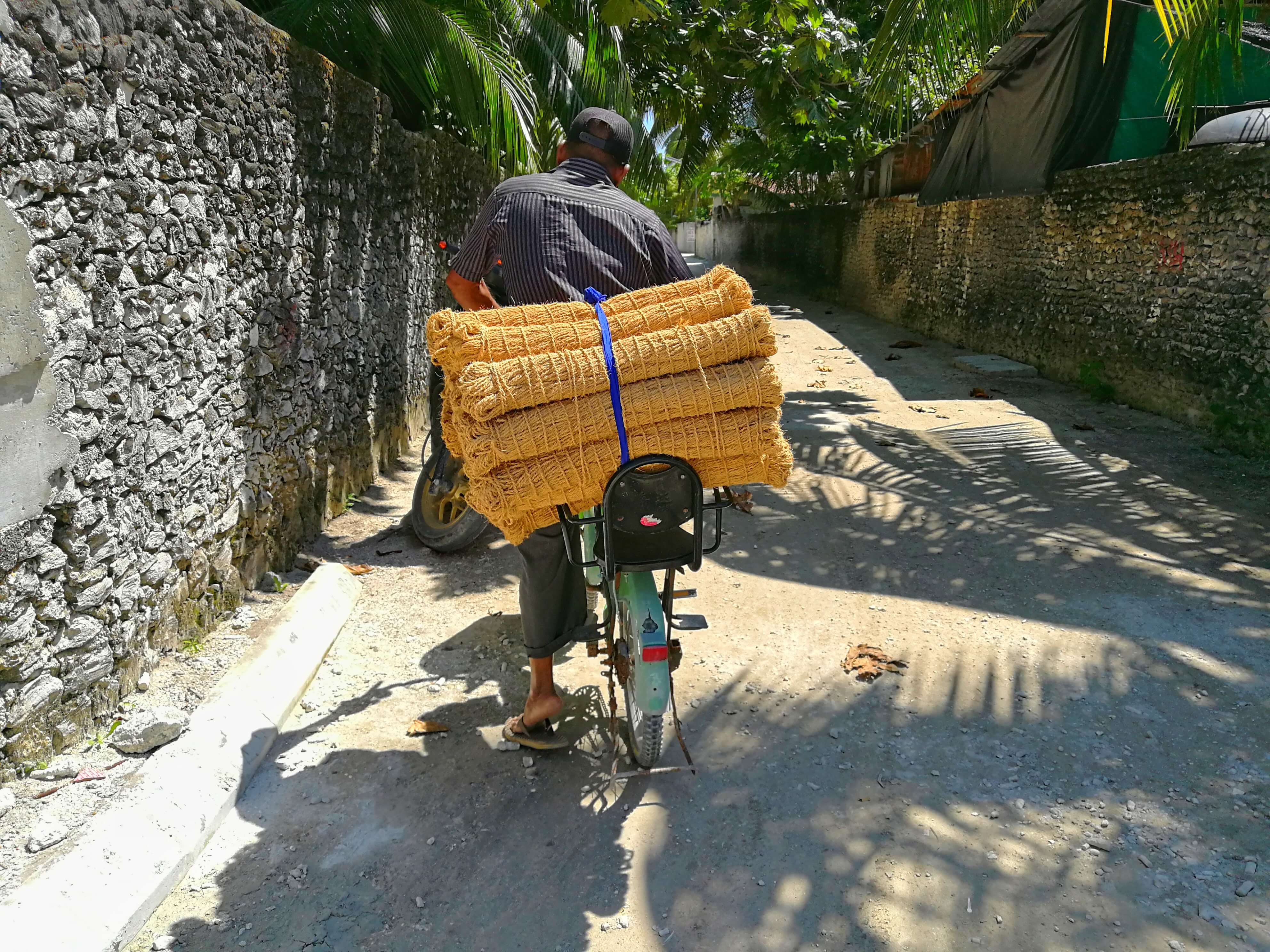 Photo Credit: Maldives Independent
Photo Credit: Maldives Independent
The Art of Coir Rope Making
The art of coir rope making in the Maldives is regarded as one of the country’s traditional handicrafts and a unique art form that has been passed down from generation to generation. Known as ‘roanu veshun’ in the local Dhivehi language, coir rope making has long been an integral part of the Maldivian lifestyle, being used for the construction of traditional boats (dhonis) and houses, and hammocks or joali. It is usually the women of the community that are mostly involved in roanu veshun or coir rope making, using different parts of the abundant coconut palm to produce items for their daily needs.
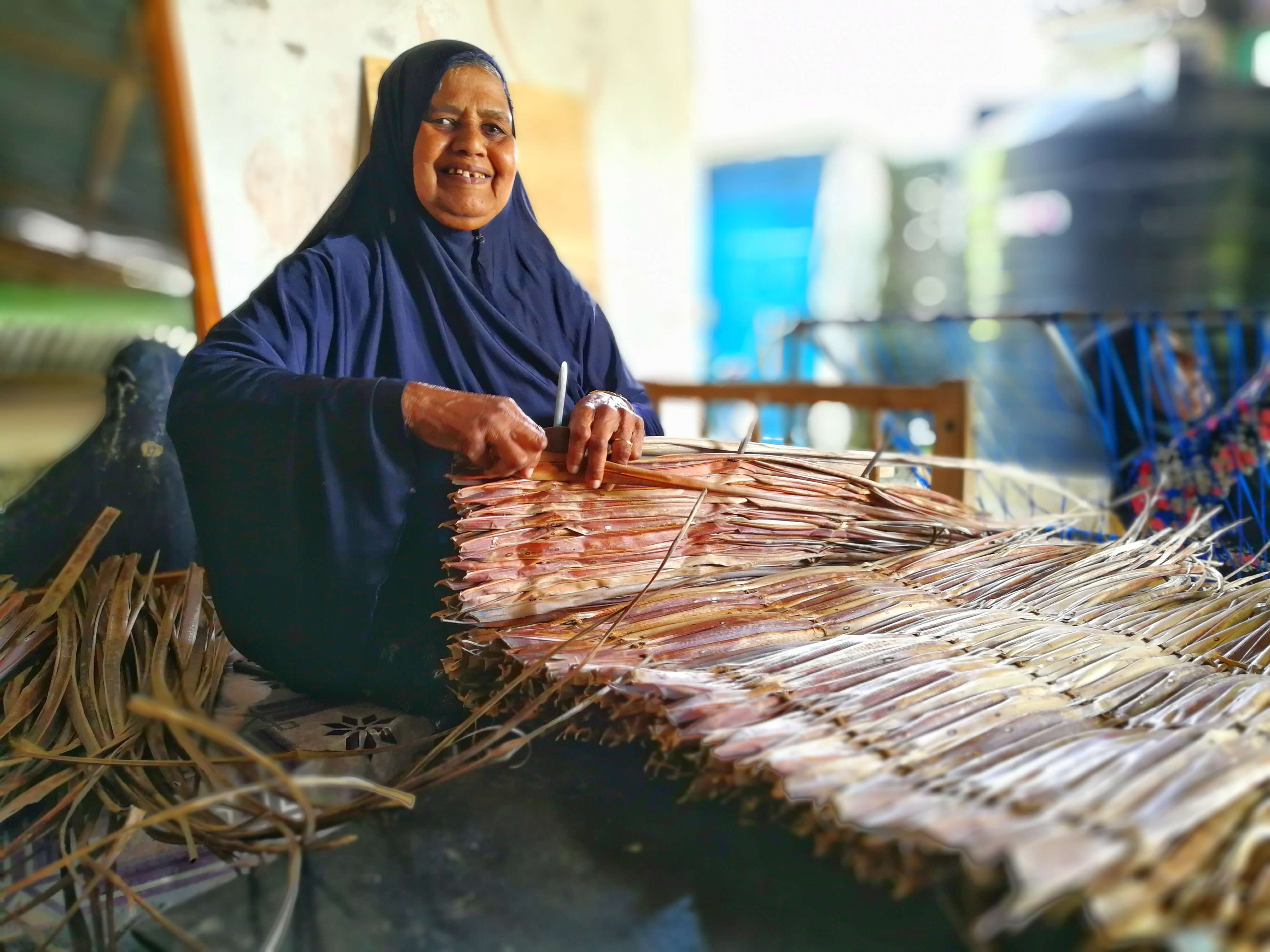 Maldivian woman weaving thatch together with coir. Photo credit: Maldives Independent
Maldivian woman weaving thatch together with coir. Photo credit: Maldives Independent
Coir
Coir, otherwise known as coconut fiber, is the natural fibrous material found between the hard, internal shell and the outer coat of a coconut. This fiber is extracted from the husk of either ripe or unripe coconuts and used to make a variety of products, such as brushes, floor mats, mattresses, doormats, and rope for the use in boat and house construction. Brown coir, which is extracted from ripe coconuts is commonly used in upholstery padding, sacking and horticulture, while white coir from unripe coconuts, is used for making rope, string, finer brushes, and fishing nets.
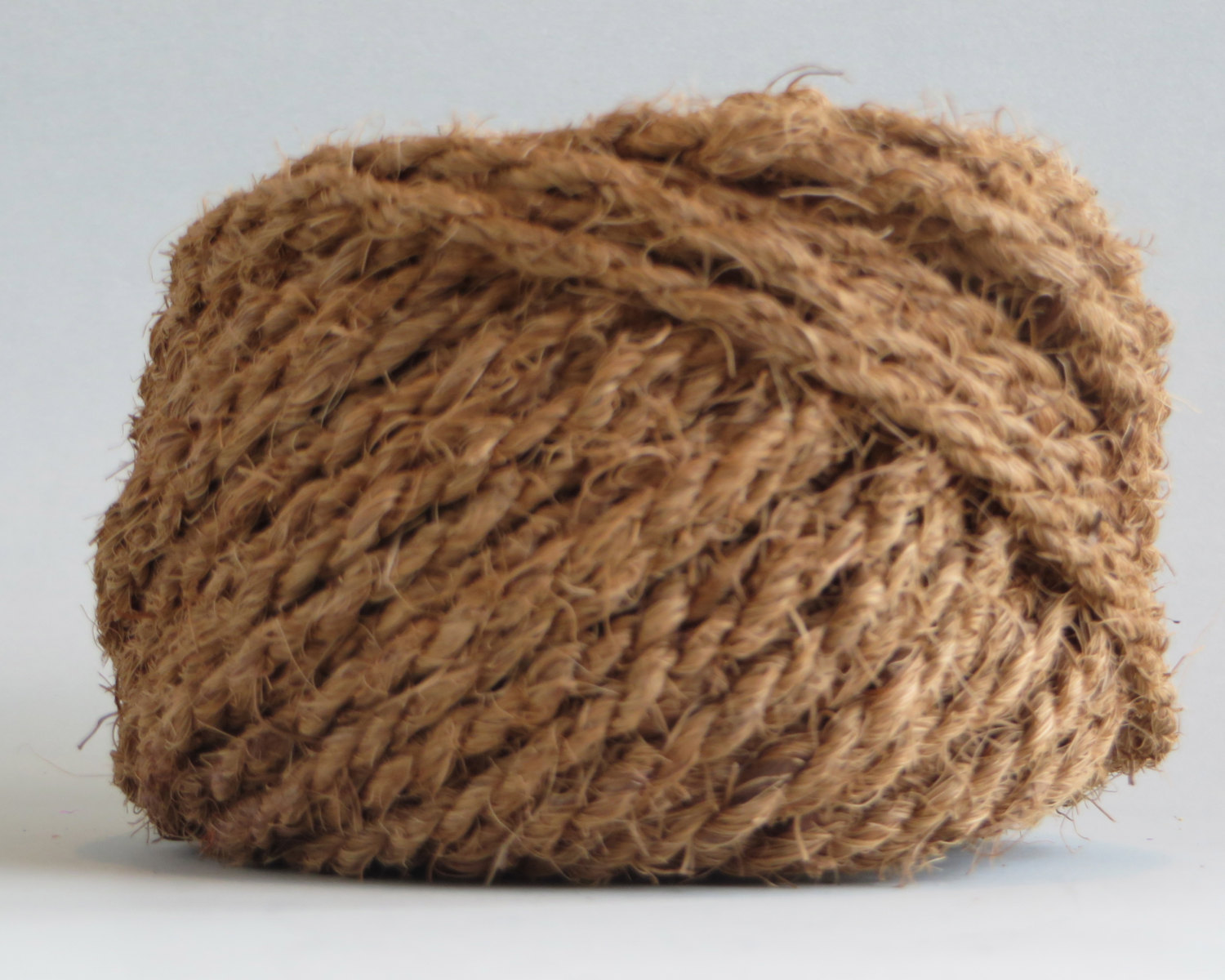 Brown coir rope. Photo credit: Etsy Studio
Brown coir rope. Photo credit: Etsy Studio
Coconut palm trees (Cocos nucifera) belong to one of the oldest plant families on the planet, and have been cultivated for at least 4,000 years. Known as ‘the tree that provides all the necessities of life’ in Sanskrit, the precursor of the modern languages of Hindi and Urdu, the coconut palm is one of the world’s most useful trees, providing an array of benefits from food and drinks to fuel, fibers, and building materials.
Extraction of Coir
Coir is extracted from coconut, which are a single seed of a fruit of the coconut palm tree (Cocos nucifera). The seed (coconut) is stripped of its external leathery skin and the thick intermediate layer of fibrous pulp, whose fibers are known as coir. These fibers range from sturdy strands that are best suited as brush bristles and woven mats to finer filaments that can be spun into coarse, durable yarn, agricultural twine, and coir rope.
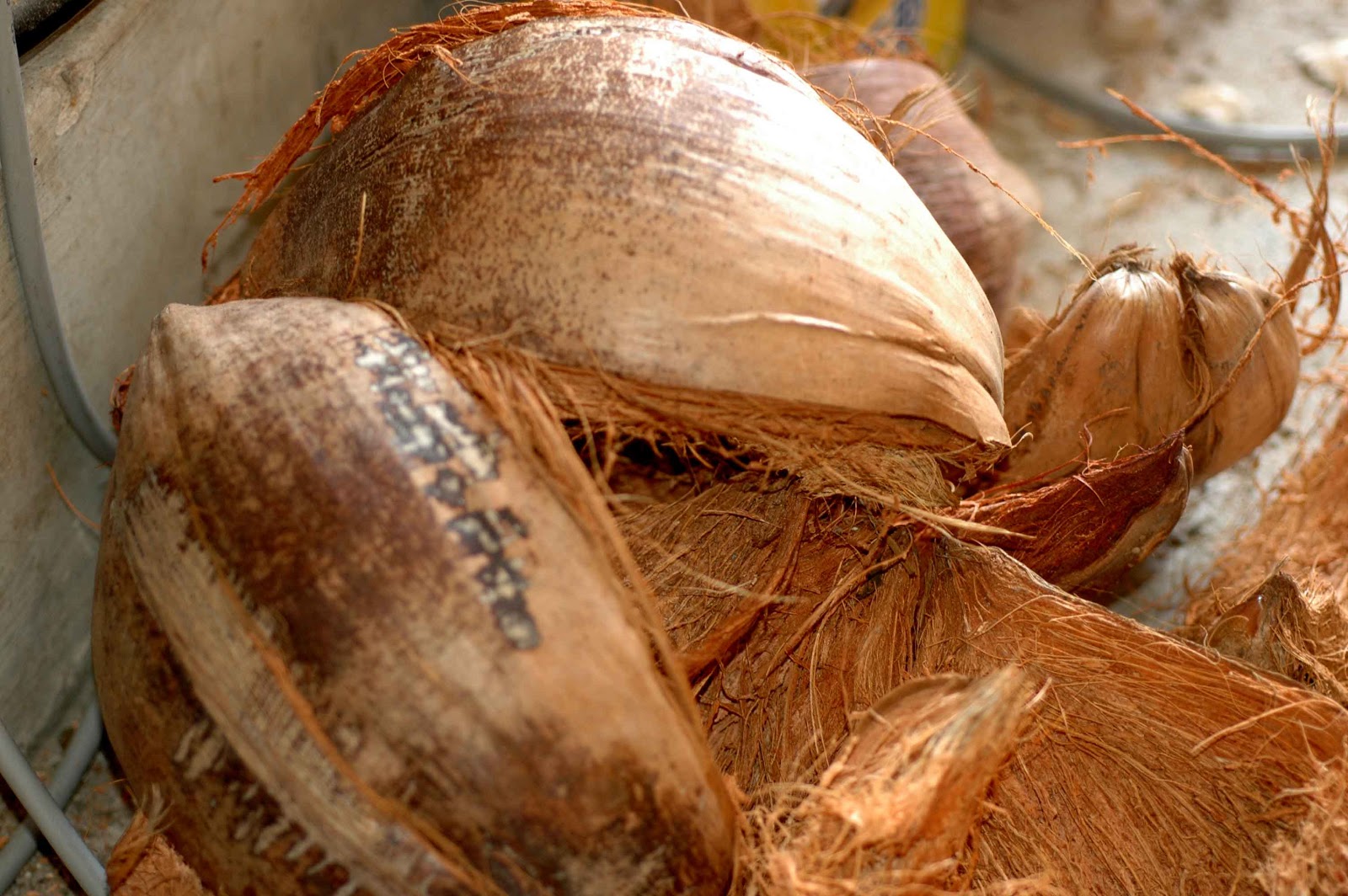 The thick intermediate layer of fibrous pulp of the coconut is known as coir. Photo credit: Eucharist Orchids
The thick intermediate layer of fibrous pulp of the coconut is known as coir. Photo credit: Eucharist Orchids
Coir rope is traditionally made from white coir, which comes from the husks of coconuts that are harvested shortly before they ripen. Light brown or white in color, this fiber is softer and less strong than brown coir and is ideal for spinning into yarn, which in turn, can be woven into mats or twisted into twine or rope known as coir rope.
Coir is the only natural fiber that is highly resistant to abrasion, as well as being resistant to salt water, making it an ideal material for manufacturing fishing nets or rope that can be used in a marine environment. It is therefore the main source of material used in the Maldives for making rope to use in boat and house construction and in for fishing nets in the country’s second-biggest industry which is fishing.
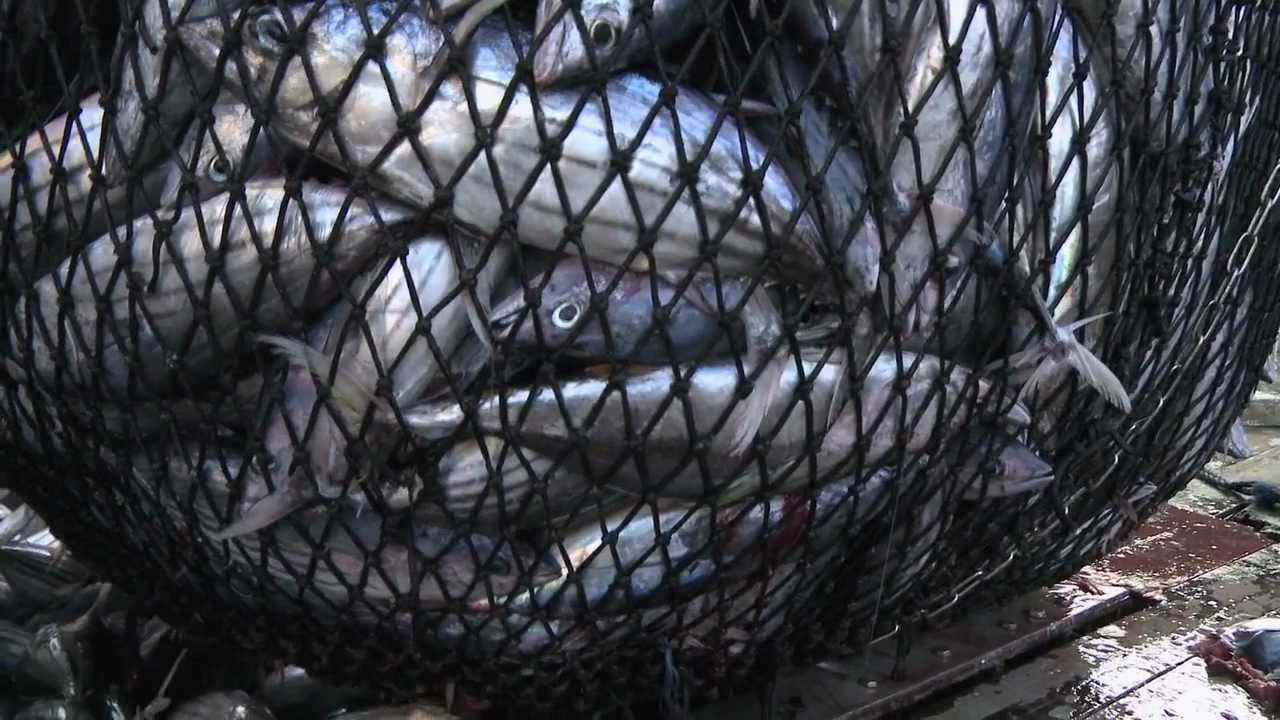 Coir is the main source of material used to make fishing nets in the Maldives. Photo credit:YouTube
Coir is the main source of material used to make fishing nets in the Maldives. Photo credit:YouTube
History
The name coir comes from ‘kayar,’ the Malayalam word for cord. Cordage and ropes have been made from coconut fibers since ancient times.
The use of coconuts first came to light when a Greek sailor writing about his travels in 60 A.D. told of an East African village on the coast of present-day Tanzania whose boats were made of planks sewn together with fibers. By the 11th century, Arab traders were teaching people in India and Sri Lanka how to extract and process coconut fibers, and later, during the 13th century, Marco Polo discovered that the masterful Arab seamen in the port of Hormuz on the Persian Gulf built their ships by sewing them together with coconut fiber. Polo also found that the Chinese had been using coconut fiber for over 500 years.
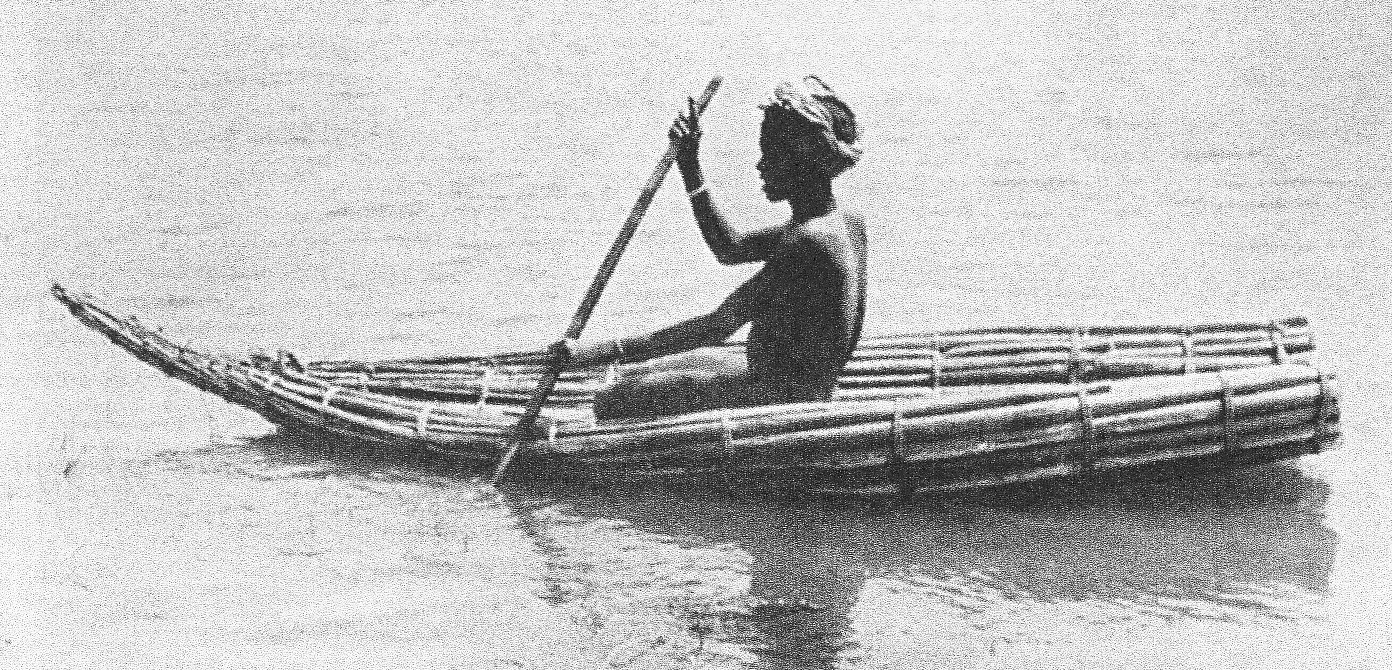 Indigenous boats were sewn together using coir rope. Photo credit: Indigenous Boats
Indigenous boats were sewn together using coir rope. Photo credit: Indigenous Boats
Coir also played a significant role in other parts of the world. Early settlers of Hawaii arrived from the Marquesas Islands in the 5th century in large, double-hulled canoes lashed together with coconut fiber. Coir, known as ‘sennit’ in Micronesia and Polynesia, was the primary material used for building boats, buildings, tools, and weapons until European explorers introduced iron nails to the region in the late 18th century.
Mechanization in the form of a de-fibering machine was introduced in the middle of the 20th century to India, where coir processing is an important economic activity, providing jobs for more than 500,000 people. However, in the Maldives, coir is still produced by hand.
The Manufacturing Process
Coconut palm trees flower monthly and take a year for the fruit to ripen, yielding around 50 to 100 coconuts per year. Harvesting usually take place on a 45-60 day cycle with the tree always containing fruit during 12 stages of the tree’s maturity.
Harvesting and husking
Ripe and unripe coconuts are harvested as they can both be used in the production of coir. Ripe coconuts that have fallen from the tree can simply be picked up from the ground, while those still attached to the tree need to be picked by hand. There are various methods of harvesting these coconuts, including climbing the tree and hand picking them; using a bamboo pole with a knife attached; or training monkeys to climb the trees and pick the coconuts.
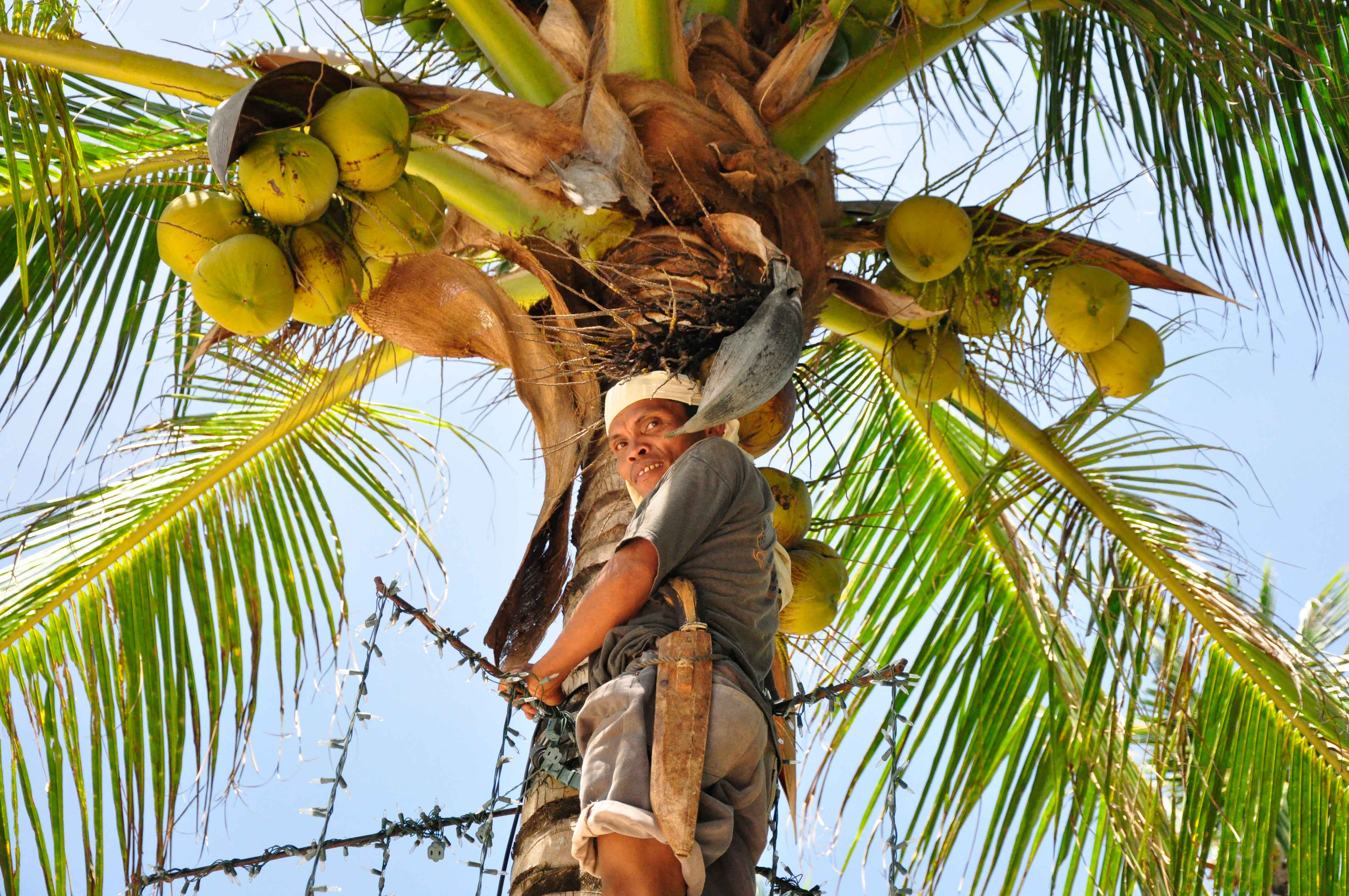 Coconuts are harvested by hand. Photo credit:VideoBlocks
Coconuts are harvested by hand. Photo credit:VideoBlocks
Ripe coconuts are husked immediately, while unripe coconuts are seasoned for a month by spreading them in a single layer on the ground and keeping them dry. The fruit is removed from the seed by impaling the coconut on a steel-tipped spike, splitting the husk, and peeling the pulp layer off. A skilled husker can manually split and peel about 2,000 coconuts per day, while modern husking machines can process 2,000 coconuts per hour. (Source: www.madehow.com)
Retting
Retting is a curing process whereby the husks of the coconut are kept in an environment that encourages the action of naturally occurring microbes. This action partially decomposes the husk’s pulp, allowing it to be separated into coir fibers and a residue called coir pith. Freshwater retting is used for fully ripe coconut husks to produce brown coir, and saltwater retting is used for green husks to produce white coir.
For freshwater retting, ripe husks are buried in pits dug along riverbanks, immersed in water-filled concrete tanks, or suspended by nets in a river and weighted to keep them submerged. The husks are left to soak for at least six months.
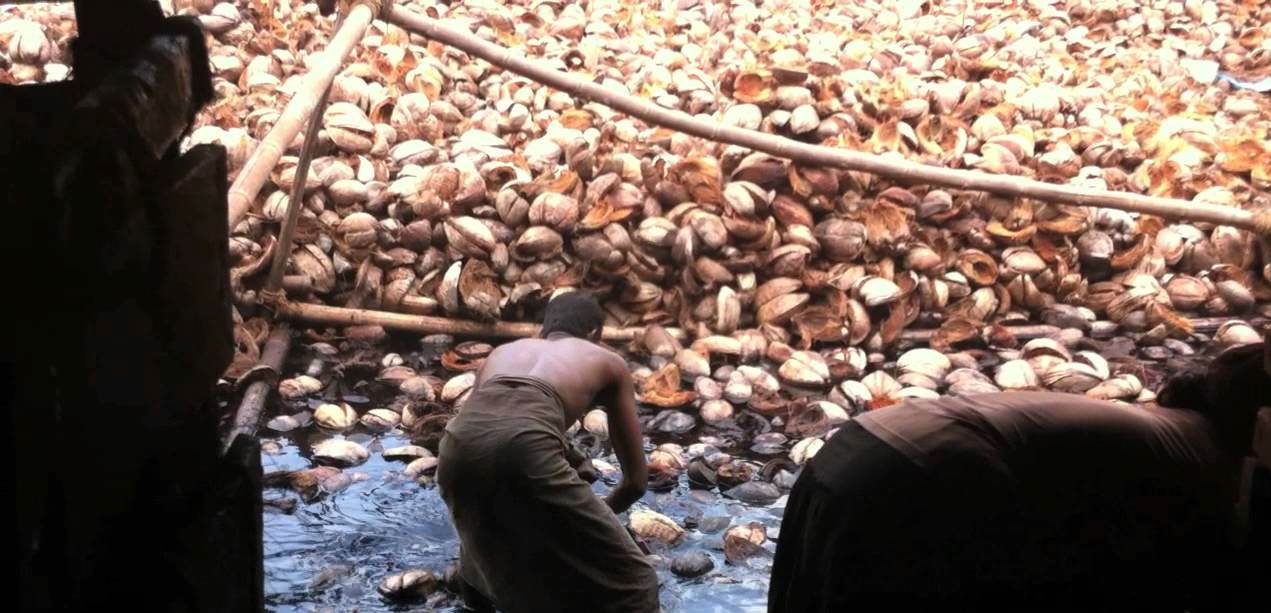 Ripe husks are buried in pits dug along riverbanks. Photo credit: YouTube
Ripe husks are buried in pits dug along riverbanks. Photo credit: YouTube
For saltwater retting, green husks are soaked in seawater or in artificially salinated fresh water. This can often be accomplished by placing them in pits along riverbanks near the ocean, where tidal action alternately covers them with sea water and rinses them with river water. Saltwater retting usually takes between eight and 10 months, although adding the proper bacteria to the water can shorten the retting period to a few days.
Mechanical techniques have recently been developed to hasten or eliminate retting. Ripe husks can be processed in crushing machines after being retted for only seven to 10 days. Immature husks can be dry milled without any retting. After passing through the crushing machine, these green husks need only be dampened with water or soaked one to two days before proceeding to the de-fibering step. Dry milling produces only mattress fiber. (Source: www.madehow.com)
De-fibering
Traditionally, the retted pulp would be beaten by workers with wooden mallets to separate the fibers from the pith and the outer skin. This separation is then completed by washing the residue from the de-fibering process and combing through it by hand or tumbling it in a perforated drum or sieve. The clean fibers are then spread loosely on the ground to dry in the sun.
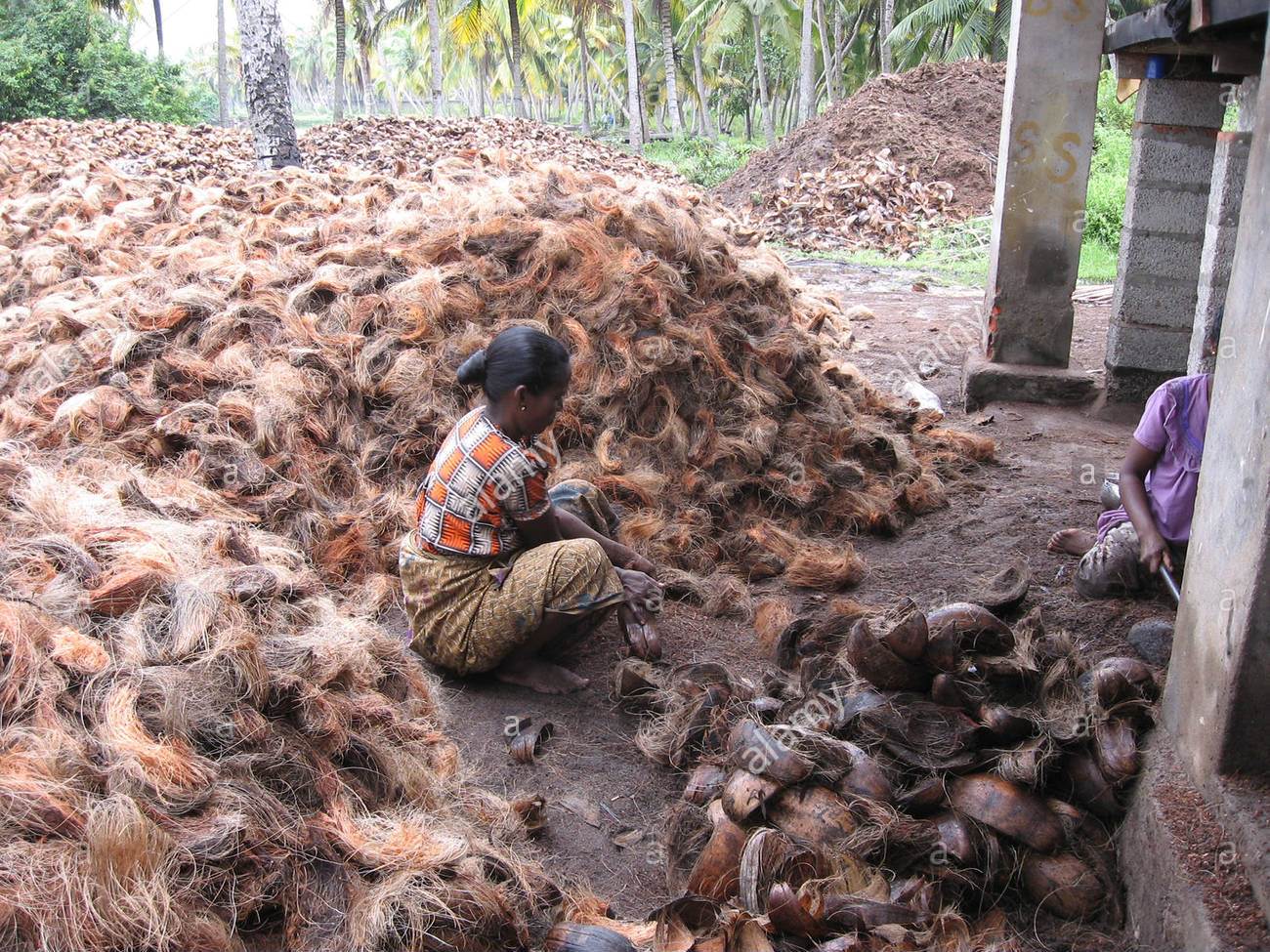 The fibers from the retted pulp are separated from the pith and the outer skin. Photo credit: Alamy
The fibers from the retted pulp are separated from the pith and the outer skin. Photo credit: Alamy
Finishing
Bristle and mattress fibers are rolled and tied into loose bundles for storage or shipment. If more processing is needed, the fibers are combed with mechanical or manual carding tools, then loosely twisted into a thick yarn (wick), and wound into bundles. Later, the wick can be re-spun into a finer yarn. Spinning techniques vary from simple hand-spinning to use of a hand-operated spinning wheel or a fully automated spinning machine. The yarn is also twisted into twine, which is in turn braided into rope or woven into mats or nets. For upholstery padding, bristle fiber is loosely spun into yarn and allowed to rest. The fibers become curly and are separated and lightly felted into mats that are sprayed with latex rubber, dried, and vulcanized (heat-treated with sulphur). (Source: www.madehow.com)
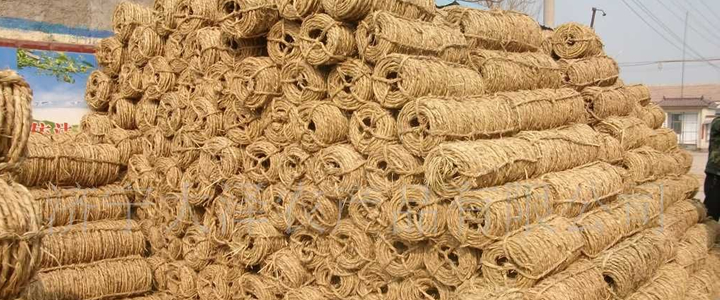 The yarn is also twisted into twine, which is in turn braided into rope or woven into mats or nets. Photo credit: SSO Exports
The yarn is also twisted into twine, which is in turn braided into rope or woven into mats or nets. Photo credit: SSO Exports
Byproducts
Coir fibers account for about one-third of the coconut pulp, while the other two-thirds are made up of the coir pith (also known as coir dust). This coir pith is generally considered a useless waste material, and although biodegradable, takes 20 years to decompose. Researchers, however, have successfully developed processes to transform coir pith into a mulching, soil treatment, and hydroponic (without soil) growth mediums that can be used as an alternative to materials such as peat moss and vermiculite. An Australian company has also recently begun turning coir pith into an absorbent product used to remediate oil spills.
Uses of Coir
Coir has a wealth of uses from bedding, flooring, and packaging to cordage and rope manufacture. White coir is used for rope manufacture and to make fishing nets due to its strong resistance to saltwater. Red coir is used in household goods such as mattresses, brushes, doormats, floor mats, flooring, and sacking. Brown coir is mainly used for insulation, packaging, and upholstery.
Coir is used as a substitute for peat moss (sphagnum) and peat in agricultural and horticultural industries as it is environmentally friendly and widely available. It can also be used as a biological control against plant pathogenic fungi due to containing large numbers of colonies of the beneficial fungus Aspergillus terreus. Coir can be used as a terrarium substrate for reptiles or arachnids, as well as a substrate to grow mushrooms.
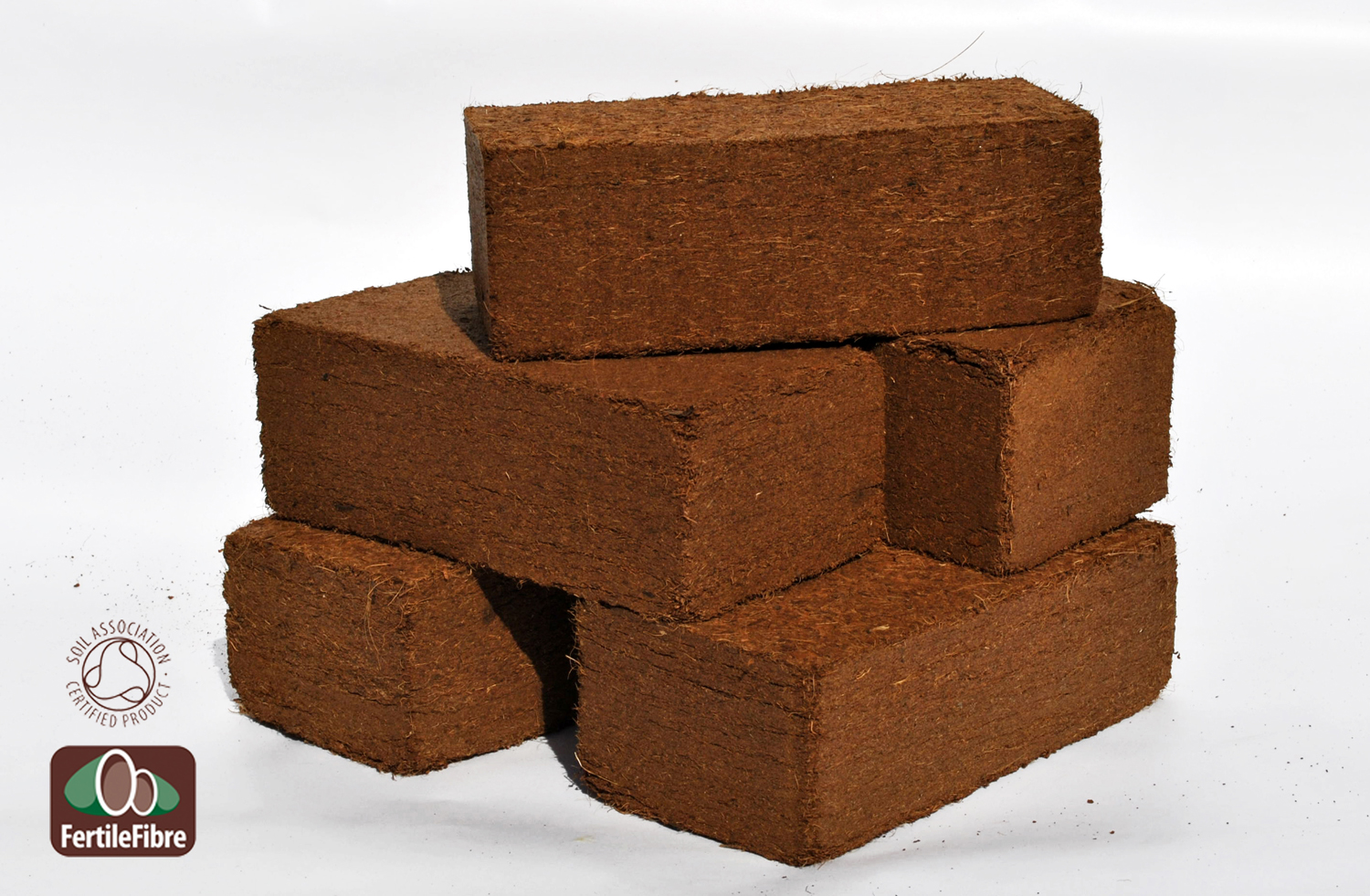 Coir is used as a substitute for peat moss (sphagnum) and peat. Photo credit:Fertile Fibre
Coir is used as a substitute for peat moss (sphagnum) and peat. Photo credit:Fertile Fibre
Article by Mia Russell©

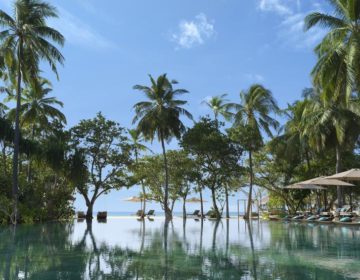
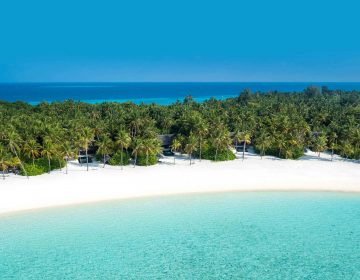

Some photos do not depict Maldivians at work but rather Indians or Sri Lankans.
[…] raw materials that are easily available such as palm leaves, reeds, coral, wood, shells, stones, coir, natural oils, and paints, and traditional Maldivian crafts include liyelaa jehun (lacquer work), […]
Hello. In your article you state that, “By the 11th century, Arab traders were teaching people in India and Sri Lanka how to extract and process coconut fibers,…” I have been doing much research on the development of coconut coir processing throughout the Indian, Pacific and Atlantic Oceans and I have not been able to find any mention of Arab traders passing along the technology of the retting process to other locations. Can you link me or share where you were able to find the info for this statement, it would be greatly appreciated and help with my work. Thanks David Neisen